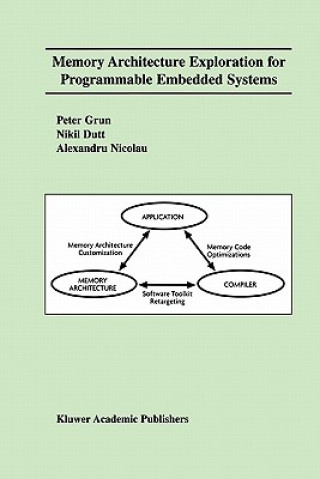
Kód: 06794572
Memory Architecture Exploration for Programmable Embedded Systems
Autor Peter Grun, Nikil D. Dutt, Alexandru Nicolau
Memory Architecture Exploration for Programmable Embedded Systems addresses efficient exploration of alternative memory architectures, assisted by a "compiler-in-the-loop" that allows effective matching of the target application t ... celý popis
- Jazyk:
 Angličtina
Angličtina - Väzba: Brožovaná
- Počet strán: 128
Nakladateľ: Springer, Berlin, 2010
- Viac informácií o knihe

139.54 €

Skladom u dodávateľa v malom množstve
Odosielame za 12 - 15 dní
Potrebujete viac kusov?Ak máte záujem o viac kusov, preverte, prosím, najprv dostupnosť titulu na našej zákazníckej podpore.
Pridať medzi želanie
Mohlo by sa vám tiež páčiť
-
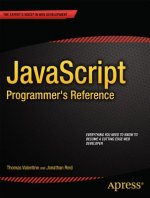
JavaScript Programmer's Reference
44.22 € -4 % -

Beginning Database-Driven Application Development in Java EE
44.22 € -4 % -

Organizations and Strategies in Astronomy
214.59 € -

Christianity Not Founded On Argument; And The True Principle Of Gospel-Evidence Assigned, In A Letter To A Young Gentleman At Oxford (1746)
44.94 € -

Snakes Are Hunters
8.08 € -5 % -

Feuerbach: The Roots of the Socialist Philosophy
25.07 € -

Saint Germaine
15.65 € -3 %
Darčekový poukaz: Radosť zaručená
- Darujte poukaz v ľubovoľnej hodnote, a my sa postaráme o zvyšok.
- Poukaz sa vzťahuje na všetky produkty v našej ponuke.
- Elektronický poukaz si vytlačíte z e-mailu a môžete ho ihneď darovať.
- Platnosť poukazu je 12 mesiacov od dátumu vystavenia.
Viac informácií o knihe Memory Architecture Exploration for Programmable Embedded Systems
Nákupom získate 345 bodov
 Anotácia knihy
Anotácia knihy
Memory Architecture Exploration for Programmable Embedded Systems addresses efficient exploration of alternative memory architectures, assisted by a "compiler-in-the-loop" that allows effective matching of the target application to the processor-memory architecture. This new approach for memory architecture exploration replaces the traditional black-box view of the memory system and allows for aggressive co-optimization of the programmable processor together with a customized memory system. The book concludes with a set of experiments demonstrating the utility of this exploration approach. The authors perform architecture and compiler exploration for a set of large, real-life benchmarks, uncovering promising memory configurations from different perspectives, such as cost, performance and power. Continuing advances in chip technology, such as the ability to place more transistors on the same die (together with increased operating speeds) have opened new opportunities in embedded applications, breaking new ground in the domains of communication, multimedia, networking and entertainment. New consumer products, together with increased time-to-market pressures have created the need for rapid exploration tools to evaluate candidate architectures for System-on-Chip (SoC) solutions. Such tools will facilitate the introduction of new products customized for the market and reduce the time-to-market for such products. While the cost of embedded systems was traditionally dominated by the circuit production costs, the burden has continuously shifted towards the design process, requiring a better design process, and faster turn-around time. In the context of programmable embedded systems, designers critically need the ability to explore rapidly the mapping of target applications to the complete system. Moreover, in today's embedded applications, memory represents a major bottleneck in terms of power, performance, and cost. In particular, Memory Architecture Exploration for Programmable Embedded Systems addresses efficient exploration of alternative memory architectures, assisted by a "compiler-in-the-loop" that allows effective matching of the target application to the processor-memory architecture. This new approach for memory architecture exploration replaces the traditional black-box view of the memory system and allows for aggressive co-optimization of the programmable processor together with a customized memory system. The book concludes with a set of experiments demonstrating the utility of this exploration approach. The authors perform architecture and compiler exploration for a set of large, real-life benchmarks, uncovering promising memory configurations from different perspectives, such as cost, performance and power. Moreover, the authors compare the Design Space Exploration heuristic with a brute force full simulation of the design space, to verify that the heuristic successfully follows a true pareto-like curve. Such an early exploration methodology can be used directly by design architects to quickly evaluate different design alternatives, and make confident design decisions based on quantitative figures. Memory Architecture Exploration for Programmable Embedded Systems is designed for different groups in the embedded systems-on-chip arena. First, the book is designed for researchers and graduate students interested in memory architecture exploration in the context of compiler-in-the-loop exploration for programmable embedded systems-on-chip. Second, the book is intended for embedded system designers who are interested in an early exploration methodology, where they can rapidly evaluate different design alternatives, and customize the architecture using system-level IP blocks, such as processor cores and memories. Third, the book can be used by CAD developers who wish to migrate from a hardware synthesis target to embedded systems containing processor cores and significant software components. CAD tool developers will be able to review basic concepts in memory architectures with relation to automatic compiler/simulator software toolkit retargeting. Finally, since the book presents a methodology for exploring and optimizing the memory configuration for embedded systems, it is intended for managers and system designers who may be interested in the emerging embedded system design methodologies for memory-intensive applications.
 Parametre knihy
Parametre knihy
Zaradenie knihy Knihy po anglicky Computing & information technology Graphical & digital media applications Computer-aided design (CAD)
139.54 €
- Celý názov: Memory Architecture Exploration for Programmable Embedded Systems
- Autor: Peter Grun, Nikil D. Dutt, Alexandru Nicolau
- Jazyk:
 Angličtina
Angličtina - Väzba: Brožovaná
- Počet strán: 128
- EAN: 9781441953292
- ISBN: 1441953299
- ID: 06794572
- Nakladateľ: Springer, Berlin
- Hmotnosť: 242 g
- Rozmery: 235 × 155 × 8 mm
- Dátum vydania: 21. October 2010
Obľúbené z iného súdka
-

Autodesk Revit 2020 for Architecture - No Experience Required
48.21 € -5 % -

NX 12 Tutorial
24.26 € -3 % -

Tinkercad For Dummies
21.18 € -19 % -

Mastering Autodesk Revit 2020
57.12 € -19 % -

Autodesk Inventor Exercises
75.65 € -

AutoCAD 2020 Instructor
87.84 € -

Autodesk Maya 2018 Basics Guide
96.54 € -

Autodesk Fusion 360 Basics Tutorial
21.18 € -19 % -

FreeCAD 0.18 Basics Tutorial
22.31 € -4 % -

CorelCAD 2020 Basics Tutorial
16.58 € -4 % -

3D CAD with Autodesk 123D
20.16 € -6 % -

Kelly L. Murdock's Autodesk 3ds Max 2020 Complete Reference Guide
86.40 € -

CAM Design and Manufacturing Handbook
155.41 € -
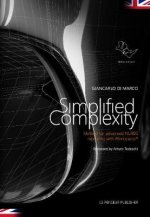
Simplified Complexity
55.18 € -

AutoCAD 2006 VBA
152.14 € -
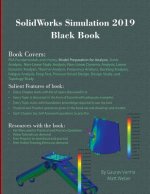
SolidWorks Simulation 2019 Black Book
67.87 € -

Kelly L. Murdock's Autodesk 3ds Max 2017 Complete Reference Guide
107.39 € -
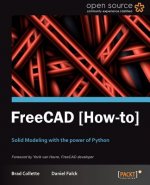
FreeCAD How to
23.95 € -

AutoCAD 2022 for the Interior Designer
82.21 € -

AutoCAD Civil 3D 2016 Essentials - Autodesk Official Press
42.07 € -20 % -

Designspark Mechanical 4.0 Basics Tutorial
18.52 € -4 % -

Autodesk AutoCAD Architecture 2020 Fundamentals
72.28 € -

ANSYS Tutorial Release 2020
77.50 € -
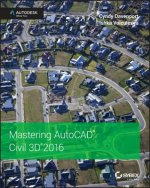
Mastering AutoCAD Civil 3D 2016 -Autodesk Official Press
77.60 € -3 % -

Parametric Modeling with Siemens NX (Spring 2019 Edition)
81.08 € -

FreeCAD 0.18 Learn By Doing
18.83 € -19 % -

Advanced Mathematical Methods for Scientists and Engineers I
83.33 € -
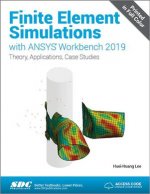
Finite Element Simulations with ANSYS Workbench 2019
94.80 € -

Learning Autodesk Inventor 2017
90.30 € -

Autodesk Vault Workgroup 2022
105.96 € -

Automating SOLIDWORKS 2021 Using Macros
88.86 € -

CATIA V5 Tutorials Mechanism Design & Animation Release 21
88.25 € -

Autodesk Revit 2018 Architecture Basics
85.69 € -

Mastering AutoCAD 2019 and AutoCAD LT 2019
66.85 € -5 % -
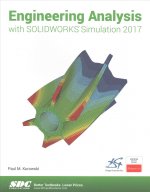
Engineering Analysis with SOLIDWORKS Simulation 2017
95.01 € -
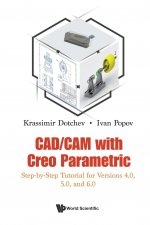
Cad/cam With Creo Parametric: Step-by-step Tutorial For Versions 4.0, 5.0, And 6.0
62.86 € -

NX for Beginners
41.66 € -3 % -

Parametric Building Design Using Autodesk Maya
71.76 € -
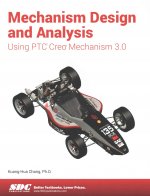
Mechanism Design and Analysis Using Creo Mechanism 3.0
73.30 € -

Mastering AutoCAD 2013 and AutoCAD LT 2013
61.52 € -13 % -

Kelly L. Murdock's Autodesk 3ds Max 2018 Complete Reference Guide
115.18 € -
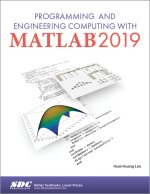
Programming and Engineering Computing with MATLAB 2019
83.54 € -

Managing and Visualizing Your BIM Data
56.71 € -
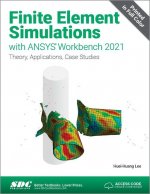
Finite Element Simulations with ANSYS Workbench 2021
101.15 € -

Autodesk Inventor CAM 2022
88.96 € -

AutoCAD 2021 For Beginners
36.64 € -3 % -

Discussing Design
34.19 € -6 % -
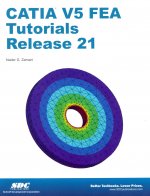
CATIA V5 FEA Tutorials Release 21
88.25 € -

Solid Edge St8 Basics and Beyond
39 €
Osobný odber Bratislava a 2642 dalších
Copyright ©2008-24 najlacnejsie-knihy.sk Všetky práva vyhradenéSúkromieCookies


 19 miliónov titulov
19 miliónov titulov Vrátenie do mesiaca
Vrátenie do mesiaca 02/210 210 99 (8-15.30h)
02/210 210 99 (8-15.30h)